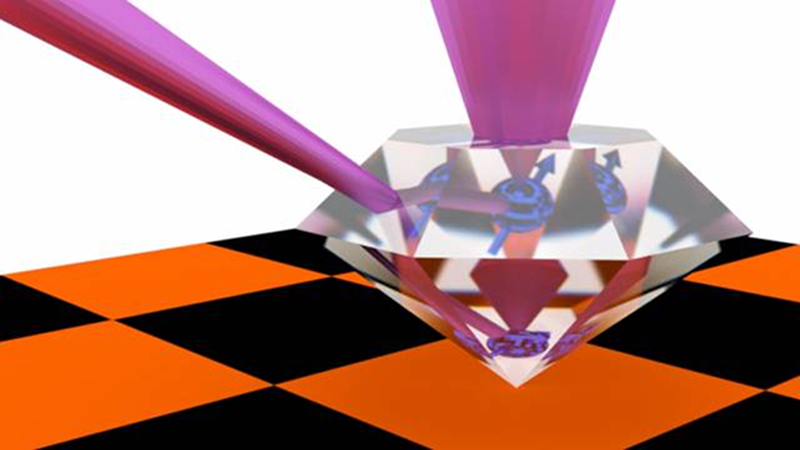If you’ve followed any of our coverage of quantum computing, you probably know that the biggest challenge is getting quantum states to last very long, especially when moving them around. Researchers at Princeton may have solved this problem as they demonstrate storing qubits in a lab-created diamond. The actual publication is behind a paywall if you want to learn even more.
Generally, qubits are handled as photons and moved in optical fibers. However, they don’t last long in that state and it is difficult to store photons with correct quantum information. The impurities in diamonds though may have the ability to transfer a photon to an electron and back.
Interestingly, this work is somewhat similar to the effort we covered using nitrogen vacancies in diamonds to store data. This type of defect — one where a nitrogen atom replaces a carbon atom in the diamond’s lattice — does store data but doesn’t have the correct optical properties. A silicon vacancy was better optically but was not stable over a long period of time.
Theoretically, a silicon defect in a diamond is electrically neutral, but other nearby defects can change that and cause the silicon vacancy to have an electric charge. Researchers wondered if this spurious charge was spoiling the stability of data storage.
Working with a diamond manufacturing company, they developed a way to purge out additional impurities to form truly neutral silicon vacancies. These vacancies appear to work well for both storing qubits and using and creating photons.
They are still working on a way to interface photonic circuits like those found in quantum computers to the crystal, so the practical application of this technology isn’t going to be immediate. The company that makes the diamonds — Element Six — has a video of some of the technology they use to create engineered diamonds, and you can see it below.
Image credit: Nathalie de Leon lab















Apparently diamonds are more than just a ladies best friend.
Apparently De Beers is branching out some from their historic selling of common but vastly overpriced carbon atoms.
It is becoming increasingly more difficult to distinguis “De Beers” certified carbon atoms from other carbon atoms and De Beers has probably realized that it is adopt or die.
Blockbusters, Nokia, Kodak and a lot of others did not see it coming and died.
Current rate for (industrial) diamond on Aliexpress is between EUR200 and EUR400 /kg.
Seems like hybrid and energy efficient consumer goods in general… a bunch of stall warts bs’ing everyone to keep the same infrastructure implemented with more defense spending and prison system industries enslaving more and more every day even if most don’t notice. I mean… why the issue with say computers using wifi frequencies as the range for the bridges and processors??? UHHhhh duh… I’m drunk on diamonds. I guess I need to bs something for a few million in funding and just shut it up for a few until I want billions.
Neat article and products from element 6. Sure seems more advanced that Soviet fake diamonds from back in the day for sure. I have to get back to the fundamental size limitations with materials if down to the atom scale to see again what the limitations are for quantum computing. I’m sure it’s not that complicated once detailed clearly from a user requirements perspective and spec’d out inputs, processes and outputs in detail. Then comes fun with custom operations and quality systems equipment. From design qualification on through the rest of the Q’s.
The article is also on the ArXiV:
https://arxiv.org/abs/1706.01555
I was a bit amused seeing that while many people are turned off by the word “synthetic” when buying gems, this seller on the World Wide Garage Sale is trying different terminology…
https://www.ebay.com/itm/1-ct-Created-Ruby-White-Sapphire-Twist-Pendant-in-Sterling-Silver/263083480779?_trkparms=pageci%3Ae7cb6eef-8510-11e8-a0fa-74dbd180b984%7Cparentrq%3A89987b121640ad4a6b795329ffe7b34d%7Ciid%3A1
One thing to note is that in order to get these long spin coherence times the group has to cryogenically cool the diamonds. The benefit of SiV centers over NV centers is that the phonon sideband signal from readout is much lower, allowing for more coherent photons to be retrieved. Essentially this allows for more accurate readout of the qbit.